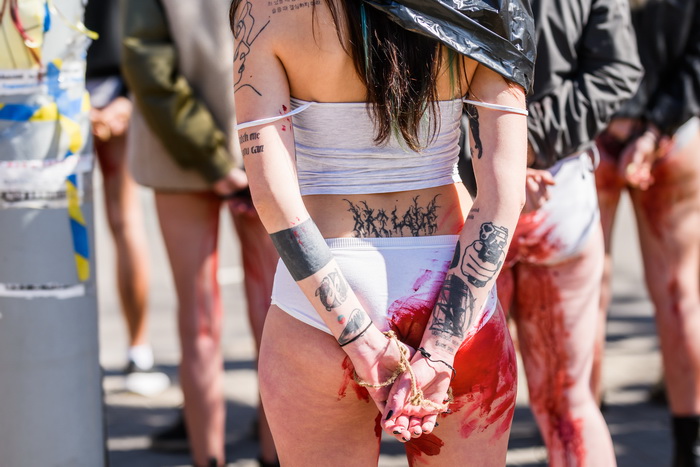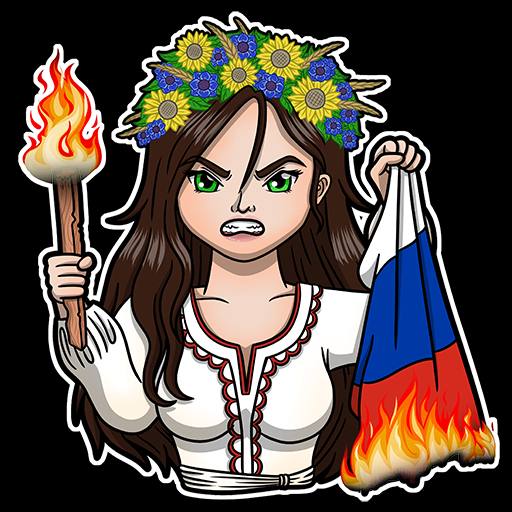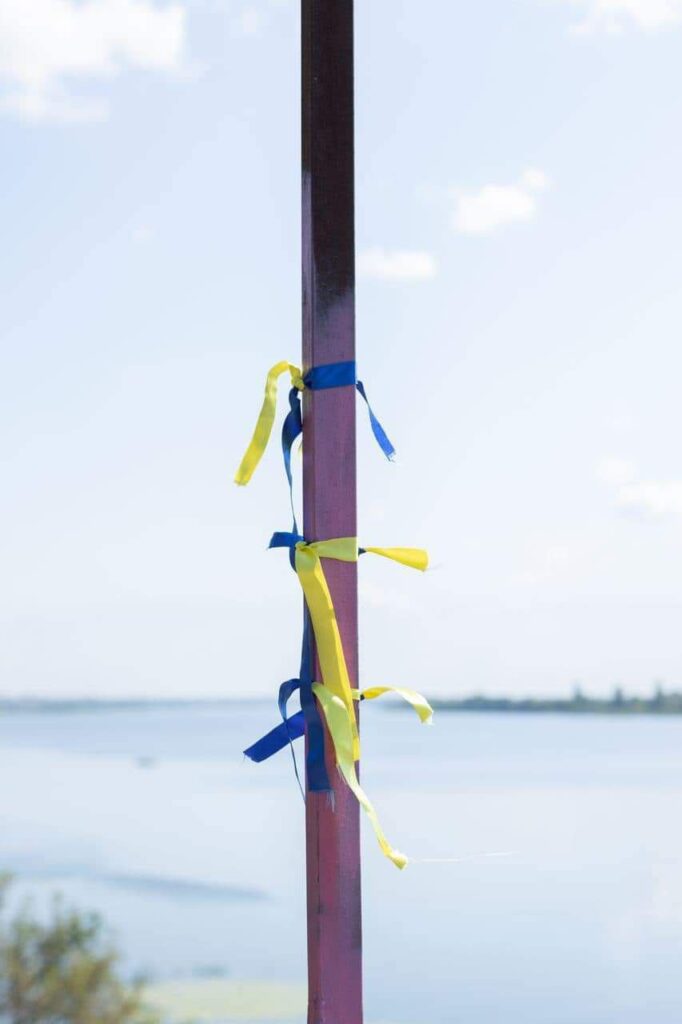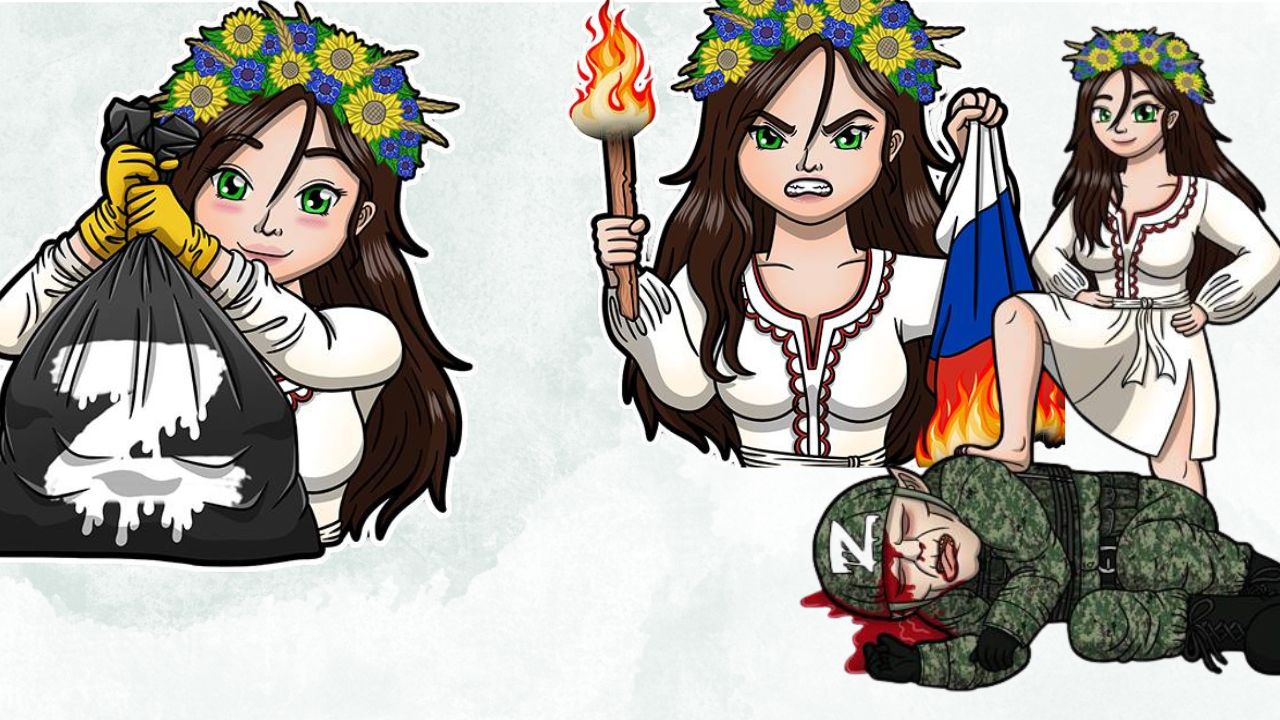In June, a day before 92 countries gathered for Ukraine’s Global Peace Summit in Switzerland to discuss and promote the Ukrainian “peace formula” to end the war in Ukraine, Russian President Vladimir Putin set out his own terms on which Russia would “immediately” enforce the ceasefire.
Apart from predictable propagandist narratives about Ukraine’s “demilitarization” and “denazification” (which implies replacing the current Ukrainian government with pro-Russian proxies), Putin demanded that Ukrainian forces “completely withdraw” from Ukrainian-controlled territory in Donetsk, Luhansk, Zaporizhzhia, and Kherson oblasts and Ukraine must officially abandon its goal to join NATO.
If Ukraine agreed to these terms and left those four oblasts for Russia, what would happen to the Ukrainian people living there?
The research paper “Crossing Thresholds: Ukrainian Resistance to Russian Occupation” (2024), published by the reputable US think tank Center for Strategic and International Studies (CSIS), found that people on the occupied territories are forcibly stripped of their Ukrainian identity and treated as a “second sort,” only able to level up by obtaining a Russian passport – and Russian citizenship. Amid the struggle, many Ukrainians still found ways to resist the occupation and live with the hope of living in freedom again.
The report’s author, Jade McGlynn, a research fellow in the War Studies Department at King’s College London, defines resistance as any act “that deliberately challenges or impedes the Russian war aim as defined by Vladimir Putin: to destroy Ukrainian sovereignty and identity.”
Since 2022, she has conducted extensive fieldwork in Ukraine, interviewing 63 people, including 50 individuals who experienced occupation, 17 resistance participants, and seven security service officials responsible for handling and helping ongoing resistance.
“If Western policymakers intend to abandon Ukraine to its fate, they have a responsibility to acknowledge what that fate entails,” the report states.
So, what is the fate of Ukrainians in Russia-occupied territories? Below is a brief overview of the report. The full version of the CSIS report is available here.
“Apartheid” system and ethnic cleansing in Ukrainian territories under Russian occupation
Life on the occupied territories is far away from peaceful, with constant reminders of the war. Instead of improving civilians’ lives, which Russian propaganda claimed to “save” from the “Kyiv regime,” the Russians instead heavily invest in new military infrastructure on occupied territories.
They reorient local industries to support military logistics and implement educational reforms to foster a pro-military mindset among residents.
Children at schools now learn the Russian version of history, raising contempt in them for everything Ukrainian.
While most funds are aimed at military development, civilian infrastructure lacks funds for reconstruction and improvement, with cities like Popasna, Volnovakha, Bakhmut, and Soledar remaining in ruins, according to the report.
Local men are the first to be drafted into the Russian army and often become “human shields” in the so-called forward detachments on the front. When Ukrainian forces capture them, the Russian side does not rush to exchange these soldiers, deeming them to not be “proper” Russians.
Ukrainians lack basic rights without Russian passports
The author of the report believes that Russians created a sort of “apartheid system” in the occupied areas because whoever acquires a Russian passport gets better treatment and services. Those who refuse it may find their wages withheld or rights for their property denied.
This policy touches ordinary civilians but then goes up, affecting the government also, with only Russian citizens being appointed to higher-level positions in administrations due to distrust of Ukrainians.
No wonder many people escaped occupation, experiencing this unfair treatment and often a disregard for human rights.
These departures caused a shortage of professionals in essential work fields, such as medical, water supply, and infrastructure repair.
To somehow solve the issue, Russians started to send their citizens from other oblasts to populate occupied Ukrainian territories and substitute the needed workers.
The author of the report identifies this as “a broader movement of settler colonialism and ethnic cleansing in the occupied territories.”
Cases of sexual violence and paranoid surveillance increase
Violation of human rights and dignity at the hands of Russians remains no secret, as even President Putin was charged by the International Criminal Court for the deportation of Ukrainian children to Russia.
Women, in particular, feel more worried in the occupied territories. They fear sexual violence as the cases of women opening up about rape increase.
One interviewee revealed that women, especially young and attractive ones, “stopped taking care of themselves” to avoid unnecessary attention from the occupiers, especially the Chechens. Women go around in ugly clothes and don’t have their hair and nails done as they used to, the interviewee says.

Their fear is justifiable considering numerous cases of sexual assault and rape by Russians, whether against elderly women or young girls, men or women.
While Russian occupiers enjoy nearly full impunity in the occupied areas of Ukraine, they have cracked down on any form of dissent in the occupied areas. Occupying authorities established a comprehensive eavesdropping network, including widespread surveillance cameras and snitching via informant networks. Getting information outside the Russian propaganda bubble became more difficult with frequent internet and mobile service disruptions.
The Ukrainian resistance speaks both Ukrainian and Russian
The language that resistors speak also does not play a key role – it can be either Ukrainian or Russian. For example, members of the seasoned Azov Assault Brigade and Kraken Special Division, an intelligence unit, consist overwhelmingly of Russian speakers.
"Speaking Russian doesn't mean a Ukrainian desires Russian occupation, just as speaking English doesn't imply an Irishman supports British reinvasion,” the report states.
Younger people usually engage more often in resistance, having a stronger sense of national identity, unlike older generations, who might carry nostalgia for the Soviet era.
While men typically dominate violent resistance activities, women are integral to both nonviolent and violent actions, as evidenced by the Zla Mavka [Angry Mavka] movement in Melitopol, Zaporizhzhia Oblast.
The inspiration for the name derives from Ukrainian mythological creatures Mavkas, believed to be malevolent, restless spirits of young women who could tickle young men to death. Under a disguise of “women’s hospitality,” they reportedly poison food and drink offered to Russian soldiers when the opportunity arises.

While they originated in Zaporizhzhia Oblast, which Russia occupied in 2022, Angry Mavkas attracts new members from previously isolated oblasts like Luhansk and Donetsk, which Russia has partially occupied since 2014.
“Reports indicate that a large number of women from Crimea have joined the resistance, demonstrating a readiness to oppose the occupation robustly,” the CSIS paper states.
Forced mobilization, inferior treatment of local forces compared to Russian soldiers, water shortages, and poor communications are among other things that fuel the resistance even in the self-proclaimed “Donetsk and Luhansk People's Republics,” occupied since 2014.
While the Ukrainian resistance movement mostly targets Russian occupiers, it can also focus on local collaborators who actively support the occupation. For example, Ukrainian partisans likely assassinated Valeriy Chaika, who implemented Russian indoctrination in schools for Ukrainian children, and Oleksandr Hallii, who assisted in expropriating Ukrainian properties in Berdiansk. The resistance is also suspected of killing Ilya Kiva, a former Ukrainian member of parliament turned Russian agent. These actions demonstrate the resistance's commitment to punish those perceived as traitors who facilitate Russian control.
Ukrainian resistance: from refusing Russian passports to assassinations
Private resistance
Families continue to speak Ukrainian at home, defying the pressure to adopt Russian. Some parents send their children to neighbors' houses, creating the appearance of school attendance while avoiding Russian-controlled education. Others steadfastly refuse to acquire Russian passports despite the difficulties this presents in daily life.
The National Resistance Centre claims that at least 60% of Ukrainians refused Russian passports, while 80% refused to put Russian license plates on their cars.
One interviewee from a long-occupied area expressed her determination:
"I won't take a Russian passport. If I do, then who will be here to greet our boys when they liberate us? Where will all the Ukrainians be? I will greet [our boys] as a Ukrainian."
Public nonlethal resistance
Journalists, activists, and ordinary citizens produce and distribute pro-Ukrainian content through newspapers and leaflets, mainly targeting older demographics who rely heavily on television for information. The TV programs only show Russian news, which is known for its propaganda, so Ukrainians look for other ways to document Russian abuses and debunk falsehoods.
The Zla Mavka [Angry Mavka] movement distributes flyers with Ukrainian news or messages, displays Ukrainian symbols in public spaces, or participates in memorial acts like placing candles in windows to commemorate the Holodomor. In Melitopol, the movement also distributes fake rubles adorned with Ukrainian symbols to remind occupiers they are in Ukraine, not Russia.
Members of the Yellow Ribbon movement discreetly tie yellow ribbons, representing one of the colors of the Ukrainian flag, or paint Ukrainian flag colors in public spaces as a symbol of resistance and affirmation of national identity.
Trending Now




Internal lethal resistance
Some residents of occupied territories are directly contributing to Ukrainian military efforts.
These individuals covertly transmit Russian forces’ coordinates to Ukrainian Special Operations Forces, enabling targeted strikes. Others closely monitor Russian troop movements, providing crucial intelligence for military planning.
Resistance groups like ATESH continue to provide critical intelligence on Russian air defenses, depots, and troop movements.
Journalists have also stepped up, with Eastern Variant, an online news source, establishing a hotline for residents in occupied areas and launching an online school of civic journalism to teach safe information transmission.
Public lethal resistance, sabotage
The most overt and perilous form of resistance involves direct attacks on Russian occupation forces and infrastructure.
Groups like ATESH and SROK have carried out assassinations of Russian personnel and their collaborators. Sabotage operations target occupation infrastructure, disrupting Russian control and logistics, especially railway systems.

In two significant operations on 13 October and 15 December 2023, partisans in Melitopol successfully detonated devices on trains carrying ammunition, fuel, and stolen goods between Crimea and Dniprorudne, Zaporizhzhia Oblast. These attacks caused considerable damage to railway infrastructure and severely hampered Russian supply lines.
In response, occupying forces heightened security measures and conducted extensive searches, but the partisans managed to evade capture and continue their activities.
The SROK resistance movement in Melitopol also marks residences of Russian occupiers with the number "200," a reference to the Russian military code for dead soldiers, undermining the occupiers' sense of security.
Ukrainian special forces also managed to conduct raids into occupied territories, often relying on intelligence from local partisans. One such raid near Nova Kakhovka on 23 January 2023 destroyed a Russian forward command post and gathered crucial data on enemy reserves.
“We’re fighting now so our children don’t have to”
These overt or covert acts of resistance on occupied territories often come along with the danger of being caught, imprisoned, or even killed.
A former resident of an occupied area described the atmosphere of fear: "Everyone knew that the police station had become the torture chamber; they wanted you to know. I would cross the street not to walk too close to it."
Across occupied territories, the Russian Federal Security Service (FSB) operates torture chambers in plain sight, serving as a grim reminder of the consequences of defiance. Reports of horrific abuse, including sexualized torture (e.g., electric shocks attached to genitalia), mutilation, and rape, are widespread. Those caught aiding Ukrainian forces or engaging in violent resistance face almost certain death.
“Any Ukrainian caught … is unlikely to live for very long—although, given the conditions in the torture chambers, they may not want to live for very long,” the report states.
So what motivates Ukrainians to do this despite all the threats?
Fight for freedom
Ukrainian resistance members span diverse political ideologies but share a pragmatic commitment to freedom and sovereignty. Their motivations stem from a desire for basic human dignity, interpreting these concepts in tangible terms like the right not to be tortured, the right to keep one's home, and the right to preserve one's cultural identity.
The common sentiments among those fighting against occupation include phrases like
"I refuse to live like a serf in my own home[town/land]," or “This is my country; why should I just hand it over to [Russians]?”
Historical destiny
Many view this conflict as the culmination of centuries-long struggles against Russian domination, referencing past atrocities like the Holodomor, a man-made famine in Soviet Ukraine from 1932 to 1933 that killed millions of Ukrainians. Another interpretation is an existential threat to Ukrainian national identity.
One fighter expressed the sentiment shared by many: "This is my country; why should I just hand it over to [Russians]?"
Younger generations, particularly millennials, express discontent with their elders for not bolstering Ukraine's defenses after the Soviet collapse. Media coverage reinforces this historical narrative, framing the resistance as a decisive moment in Ukraine's history.
"We're fighting now so our children won't have to," seems to be a prevailing sentiment among resistors.
Personal experiences of injustice
Personal losses, restricted freedoms, and economic disruptions also fuel their opposition. For example, Russia's "sister regions" program exemplifies these grievances, allowing Russian regions to invest in occupied areas and dominate local markets. This initiative not only displaces local goods with pricier Russian alternatives but also reinforces the perception that the occupation solely serves Russian interests. Such policies have transformed economic hardship into a powerful catalyst for resistance against the occupying forces.
Response to violence and abuse
The horrific reports of sexual violence and other abuses by Russian forces became powerful drivers of resistance, either by taking up arms or offering support in other ways. The trauma experienced by victims and witnesses often transformed into a resolute determination to oppose the occupation.
Professional duty
Some resistors, particularly those with military or intelligence backgrounds, view their involvement as continuing their service. One Ukrainian serviceman described how, in late 2021, he was instructed to remain behind and coordinate resistance activities in the event of occupation.
Among the trained operatives are members of Ukrainian Special Operations Forces, military intelligence, and specialized units like the Kraken division, which has conducted successful operations in Russian-controlled areas despite occasional setbacks.
Heroism of Ukrainian resistance deserves broader recognition
The resistance serves as a powerful reminder that these occupied territories are not lost causes but active participants in Ukraine's fight for freedom. By continuing to identify, intimidate, and sometimes even assassinate Russian occupiers, the resistance denies Russia full control over occupied territories.
The heroism of the Ukrainian resistance deserves broader recognition, not just for the sake of those risking everything, but also to provide a more accurate understanding of the war.
As the report concludes, "It is easier to justify giving up hundreds of thousands of innocent men, women, and children to the arbitrary rule of torturers and executioners if you can pretend that there is no alternative, nobody there is fighting back, and the residents have come around to Russian rule, perhaps even welcomed it. As this report shows, that justification is not true."
Related:
- Ukraine’s National Resistance Center: Russian teens to manufacture 10,000 Shahed drones annually
- Insurgent Ukrainian resistance successfully executes operation in Russia-occupied Melitopol – UA intel
- Missile strikes and spraypaint: how Ukraine’s resistance movement fights Russian occupation
- “We couldn’t believe it!” Kherson residents on being freed from Russian occupation

